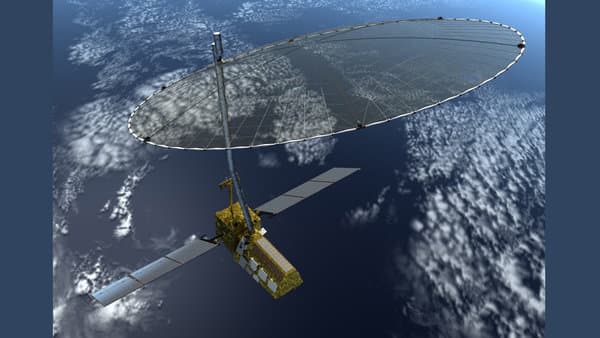NASA And ISRO Join Hands For NISAR Satellite To Study Natural Disasters And Climate Change
The Indian space programme has recently received yet another feather in its cap, by means of a newly formed scientific partnership between NASA and ISRO. The National Aeronautics and Space Administration and the Indian Space Research Organization have collaborated to develop a dual frequency synthetic aperture radar satellite, named as NISAR. Our world witnesses significant changes in our ecosystem which directly impacts the connected sectors and drastically hinders the biosphere. This collaborative project aims to address such key issues such as global warming and minutely study such complex earth processes like melting ice sheets, volcanoes and earthquakes.
Technologically, NASA has promised to provide the mission’s L-band synthetic aperture radar, a high rate communication subsystem, GPS receiver, a solid state recorder, a payload measuring system whereas ISRO would help in the mission by supplying a satellite bus, a S-band synthetic aperture radar, the launch vehicle and various other launching services. This wise collaboration will bear fruit by analyzing recent escalation in temperature and unpredicted earthquakes and tsunamis.

Artist's concept of NISAR satellite
The proposed design talks about a radar antenna system that can both transmit and receive electromagnetic waves with a defined polarization. The scale is defined in such a way so that changing the polarization of the transmitted signal could capture data which will be important for a polarimetric characteristic of the sample space i.e. the observed earth.
In the official website, NASA's JPL has mentioned that ISRO has devised different monitoring techniques, from which India will gain immensely. Starting from agriculture, the satellite will gather valuable information by studying clay components, snow and glacier sheets in the Himalayas and in the coastal and oceanic ecosystems. According to the press release, the satellite is expected to be launched in the year 2020.
Source: #-Link-Snipped-# | nisar.jpl.nasa.gov
Technologically, NASA has promised to provide the mission’s L-band synthetic aperture radar, a high rate communication subsystem, GPS receiver, a solid state recorder, a payload measuring system whereas ISRO would help in the mission by supplying a satellite bus, a S-band synthetic aperture radar, the launch vehicle and various other launching services. This wise collaboration will bear fruit by analyzing recent escalation in temperature and unpredicted earthquakes and tsunamis.

Artist's concept of NISAR satellite
The proposed design talks about a radar antenna system that can both transmit and receive electromagnetic waves with a defined polarization. The scale is defined in such a way so that changing the polarization of the transmitted signal could capture data which will be important for a polarimetric characteristic of the sample space i.e. the observed earth.
In the official website, NASA's JPL has mentioned that ISRO has devised different monitoring techniques, from which India will gain immensely. Starting from agriculture, the satellite will gather valuable information by studying clay components, snow and glacier sheets in the Himalayas and in the coastal and oceanic ecosystems. According to the press release, the satellite is expected to be launched in the year 2020.
Source: #-Link-Snipped-# | nisar.jpl.nasa.gov
Replies
You are reading an archived discussion.
Related Posts
China's space program is in a celebratory high following the successful launch of their bullet-shaped retrievable research satellite which is supposed to assist scientists in the study of various aspects...
After graduating as an IT engineer in 2004, Selvam M as a software trainee with Concord IT Services, where he built his skills in top web technologies such as PHP...
How to negotiate a deal?
The Key to Success: Negotiating 101 For Engineers
Elan Musk is definitely looking to up the ante with his latest launch, the Tesla Model 3.
Model behaviour: Elon Musk raises the stakes
Hello sir please help me
My acads diploma + BE in information technology which many is coding projects major projects being in security and network domain in java and internship...
